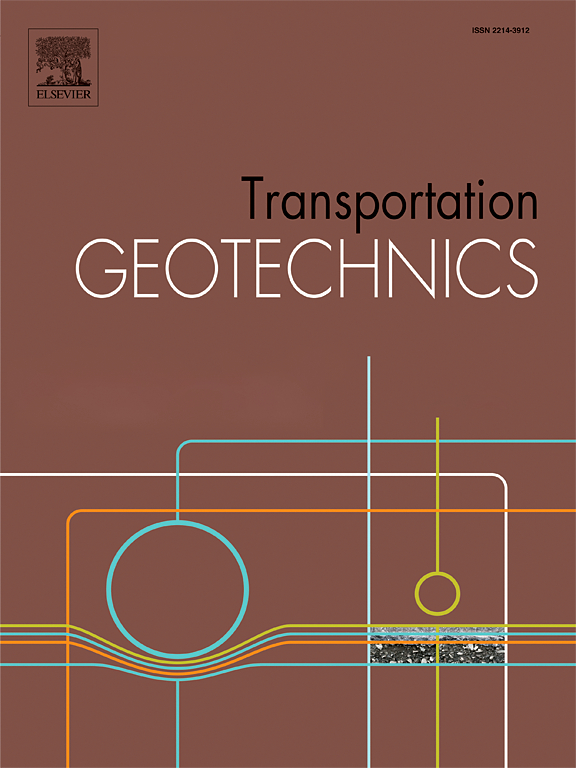Experimental investigation of the influence of seepage direction on internal erosion characteristics in gap-graded soils
IF 4.9
2区 工程技术
Q1 ENGINEERING, CIVIL
引用次数: 0
Abstract
This study investigates the influence of seepage direction on internal erosion in gap-graded soils through a series of hydraulic tests conducted using a newly developed permeameter capable of adjusting the seepage direction. The erosion process is qualitatively captured through visual observations during testing and post-test inspections, while quantitative analysis is performed using data from multiple pore pressure transducers. The results reveal a nonlinear relationship between the critical hydraulic gradient and seepage direction. As the flow shifts from horizontal to vertically upward, the critical hydraulic gradient initially increases and then decreases. Meanwhile, the erosion pattern evolves from a non-uniform distribution to a more uniform one across the soil cross-section. The localized critical hydraulic gradient, indicative of early-stage instability, is found to be 40%–60% lower than the global critical hydraulic gradient. Theoretical predictions further validate the observed nonlinear trend. These findings provide new insights into the mechanisms of seepage-induced failure and offer a refined approach for identifying vulnerable zones in geotechnical structures, contributing to improved design and risk mitigation under varying seepage conditions.
渗流方向对间隙级配土内部侵蚀特性影响的试验研究
本文采用新研制的可调节渗流方向的渗透仪进行了一系列水力试验,研究了渗流方向对间隙级配土内侵蚀的影响。通过测试期间的目测和测试后的检查,可以定性地捕捉侵蚀过程,同时使用多个孔隙压力传感器的数据进行定量分析。结果表明,临界水力梯度与渗流方向之间存在非线性关系。随着水流由水平向垂直方向上升,临界水力梯度先增大后减小。同时,侵蚀模式在土壤横截面上由非均匀分布向均匀分布演变。表明早期不稳定的局部临界水力梯度比全局临界水力梯度低40%-60%。理论预测进一步证实了观测到的非线性趋势。这些发现为渗漏破坏机制提供了新的见解,并为识别岩土结构中的脆弱区域提供了一种完善的方法,有助于改进设计和降低不同渗流条件下的风险。
本文章由计算机程序翻译,如有差异,请以英文原文为准。
求助全文
约1分钟内获得全文
求助全文
来源期刊

Transportation Geotechnics
Social Sciences-Transportation
CiteScore
8.10
自引率
11.30%
发文量
194
审稿时长
51 days
期刊介绍:
Transportation Geotechnics is a journal dedicated to publishing high-quality, theoretical, and applied papers that cover all facets of geotechnics for transportation infrastructure such as roads, highways, railways, underground railways, airfields, and waterways. The journal places a special emphasis on case studies that present original work relevant to the sustainable construction of transportation infrastructure. The scope of topics it addresses includes the geotechnical properties of geomaterials for sustainable and rational design and construction, the behavior of compacted and stabilized geomaterials, the use of geosynthetics and reinforcement in constructed layers and interlayers, ground improvement and slope stability for transportation infrastructures, compaction technology and management, maintenance technology, the impact of climate, embankments for highways and high-speed trains, transition zones, dredging, underwater geotechnics for infrastructure purposes, and the modeling of multi-layered structures and supporting ground under dynamic and repeated loads.
 求助内容:
求助内容: 应助结果提醒方式:
应助结果提醒方式:


